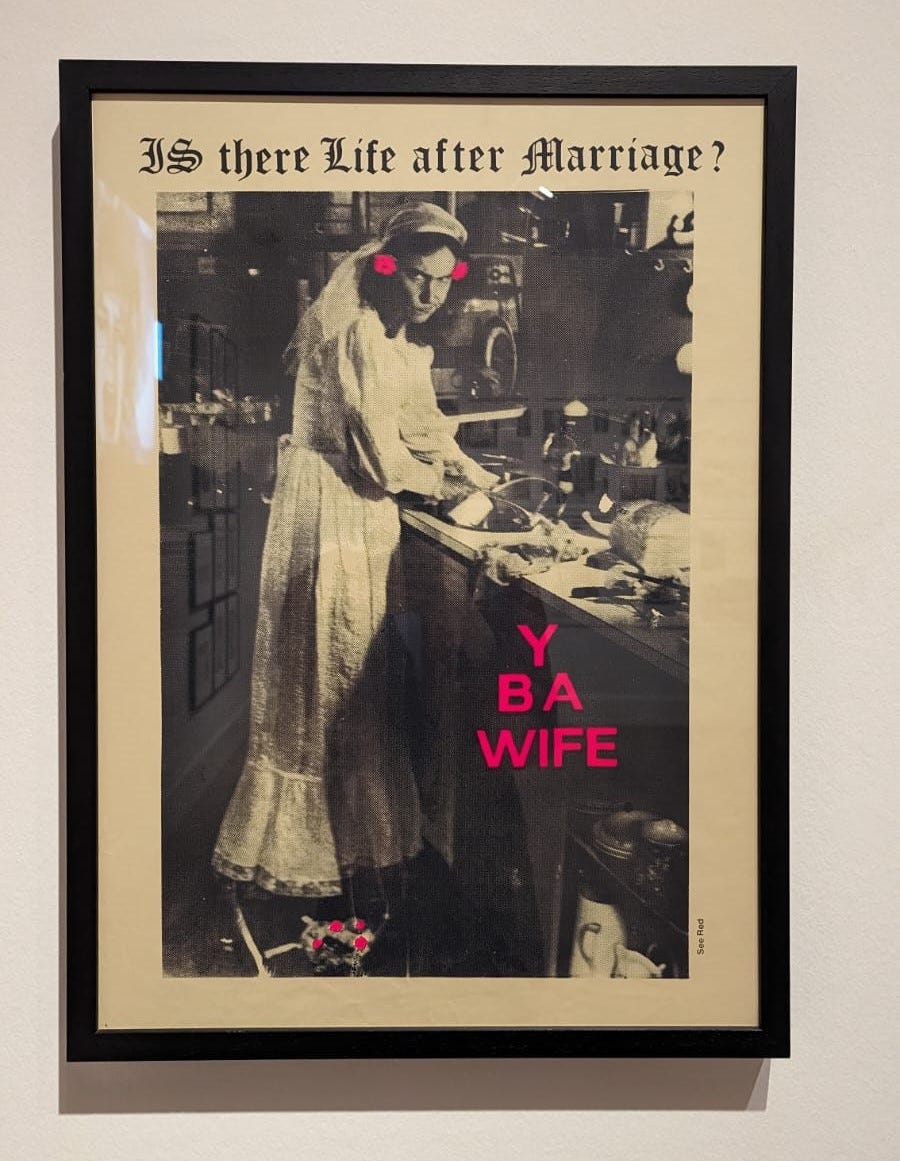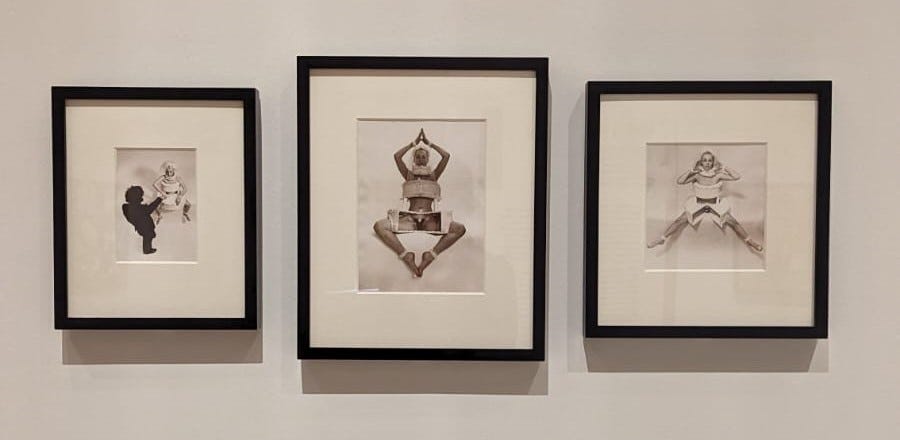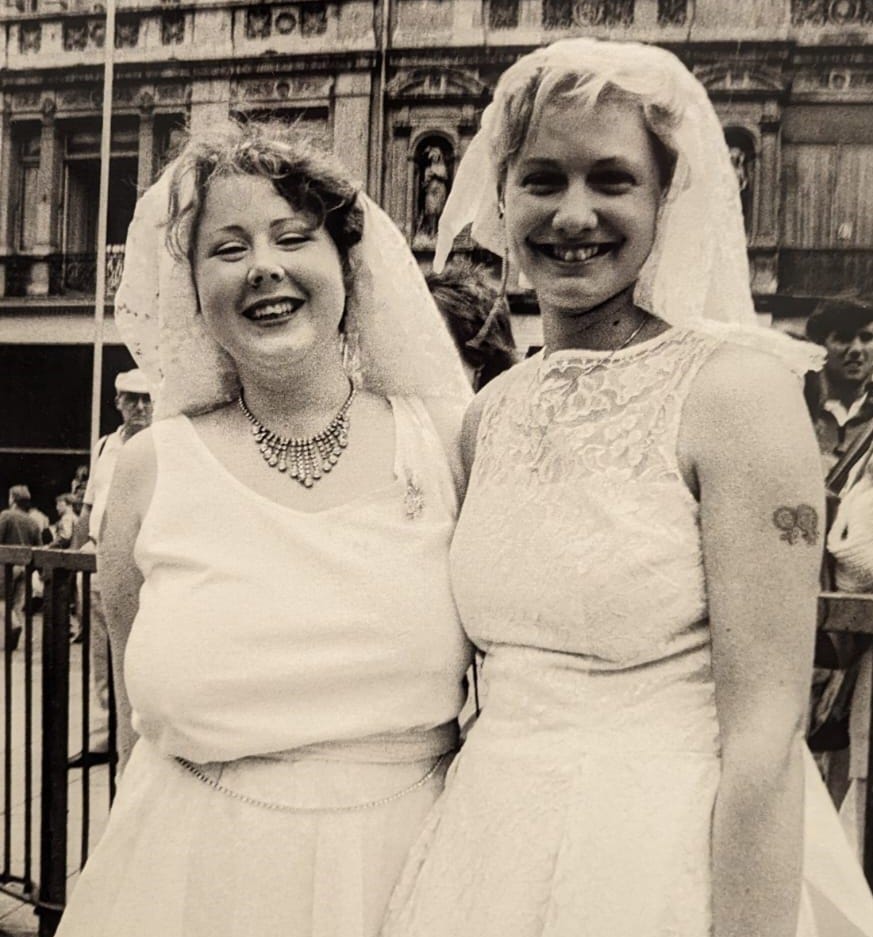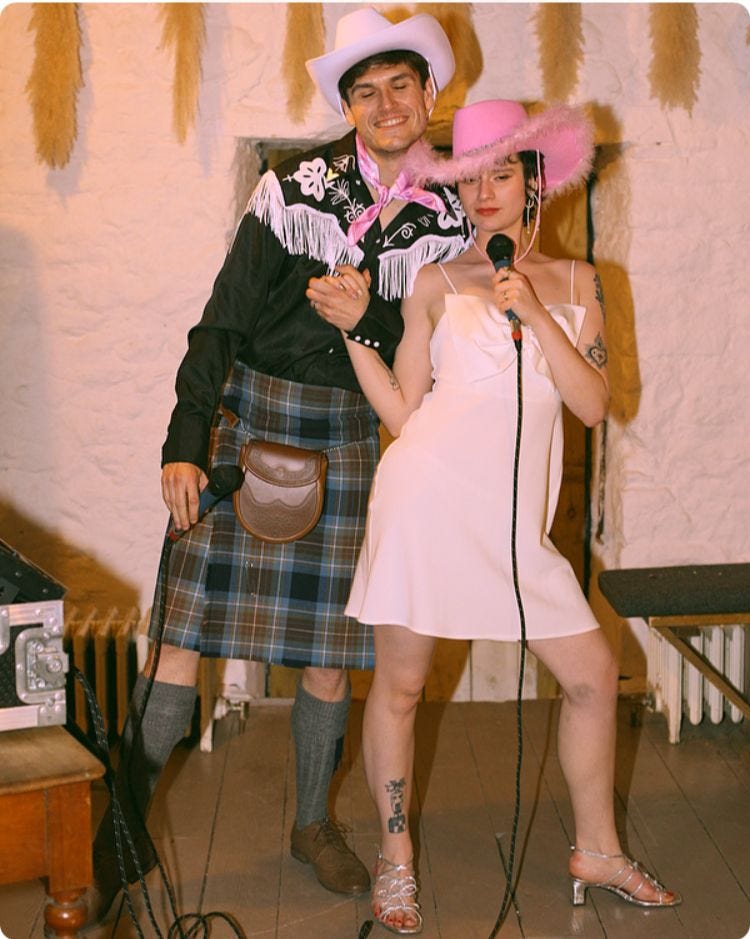Y B A Wife
Visiting Women in Revolt! at the National Galleries of Scotland a week after my civil partnership.
When I saw Women in Revolt! at Tate Britain in November 2023 – not long after deciding to tie the knot – I came away feeling secretly ashamed. Confronted by the artists who had parodied the heteronormativity of the wedding ritual, I internalised the guilt that I might be perpetuating a stereotype that the Second Wave feminists fought against.
With every person I told about my upcoming marriage to my partner Sean, my bisexuality became more distant, more invisible. Announcing the engagement felt like a confession, an erasure of who I am and who I believed the straights didn’t want me to be – comfortable with my attraction to more than one gender.
Biphobic people often claim that it’s inevitable that a bisexual woman will end up with a man. I’ve heard it so many times that I’ve felt like a failure, another example to back up the biphobic cause. We’re told that what we do and how we feel is weird, greedy, dirty, impossible even. And yes, admittedly, I do benefit from a degree of comfort and safety in a heterosexual relationship because it’s not as politicised as a queer relationship is. I never need to justify it to anyone. But there’s no comfort and no safety in speaking about my bisexuality while in a heterosexual relationship. Because then my commitment to Sean and love for him is called into question. So, I ask that you keep an open mind, as I examine my sexuality through the art on the walls.
First, I nervously laughed at the sight of a poster by See Red Women’s Workshop titled YBA Wife – Is There Life After Marriage? (1981). As part of the campaign for legal and financial independence, this poster presents a woman furiously washing up while clad in her wedding frock and veil, having had no time to take them off since stomping down the aisle. Her scornful eyes pierced into me, while the hot pink text ‘Y B A WIFE’ sent me into a spiral as I scrambled to find a defence. [I can’t wait for Sean to read this part, because he knows how allergic I am to washing up liquid. And sponges. And warm water.]
Then, I came face to face with Bride’s Cake, a cutting series by the indomitable Penny Slinger. These photographs were taken during a 1973 performance piece that sought to upend the traditions of erotic representation. In a radical act characteristic of her practice, she crafted a wedding cake costume that positioned her naked body as a protest. To me, she toppled the institution of marriage.
Somewhere in the exhibition inside a vitrine, there was a collage wedding invitation featuring a faceless bride pasted next to a Queen Elizabeth's banknote portrait. In my head, I illustrated an exhibition map, a woman in a silly white veil at each stop, there to mock me.
Women in Revolt! triggered a strange explosion of guilt, shame, desire and pride. Every artwork that revealed marriage for what it was – a transfer of patriarchal power – overwhelmed me. I could only interpret the bridal imagery as a total rejection of heterosexual union, not a nuanced undoing of archaic gender roles. The exhibition provoked a series of shy conversations between me and Sean about how we might shape our partnership so that it allows us to be authentically ourselves. At the time, Sean said I should revive this newsletter and write about how I feel as a cathartic exercise. I couldn’t even write it down for myself, in private.
We began to frame the wedding as a performance, negatively at first, and then we became emboldened to explore the parts we might alter to better fit who we are as individuals and as a couple. We opted for a civil partnership (or civvy p, as we prefer to call it), because the union emerged from the long battle for queer rights, and it would make us partners in crime, not Mr. and Mrs. But we also justified some of the more traditional wedding rituals – my dad walking me down the aisle, for instance, because it meant the world to me that he was able to. I ignored the symbolic significance of being ‘given away’ because, ew, that’s gross.
This weekend, I saw Women in Revolt! for the second time around, in Scotland, our home. A week after our civil partnership, I felt bolder and at ease. I was reunited with the same portraits and smiled back at them. There was more headspace to absorb alternative perspectives and find new routes through the exhibition.
In the final room, you’ll find a photograph of an intoxicatingly happy lesbian couple, clad in wedding frocks and veils during a LGBTQI+ protest. I admired it in the knowledge that this could’ve been me, but it isn’t, and that’s okay. I’m still bisexual.
Before I left, I bought a reproduction print of the Y B A Wife poster from the gift shop, in celebration of what they fought for and what I chose: a partnership with the person I love.
Women in Revolt!: Art and Activism in the UK 1970-1990 opened this weekend at Modern Two, Edinburgh. It’s here until 26 January 2025 and yes, you should definitely go see it.






